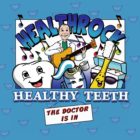Osteoporosis or thinning of the bones that leads to compromised bone strength is the most common bone disorder affecting humans. It affects 28 million Americans and 80% of them are women. About half of Caucasians, Hispanics and Asians and 38% of African-Americans have bone loss that can lead to osteoporosis. I think it’s one of the most important changes that occur with menopause. Unless you have a bone density done, you might not be aware of this silent problem that can cause unsightly physical changes such as a dowagers hump or loss of height (sometimes more than two inches), and also lead to a broken hip – a life threatening conditions.
If you are a woman over 50 with osteoporosis, your risk of breaking a bone doubles every 7 to 8 years. Bone density machines differ slightly so the results are reported as either a Z-score or a T-score. The T-score is the preferred method for women in menopause and it compares a woman’s current bone density to that of a normal young adult woman who is believed to be at her peak bone density. The North American Menopause Society (NAMS), the World Health Organization (WHO) and the International Society for Clinical Densitometry all use the definitions in the table below.
Although osteoporosis is a silent disease, you don’t need to tiptoe around, afraid that calcium is silently oozing out of your bones leaving you frail and vulnerable. Get a bone density test (also known as a dual energy x-ray absorptiometry or DEXA) as menopause approaches. Bone loss starts accelerating a few years before menopause and continues to accelerate until about three years after menopause when bone loss starts to level off. During this time women lose about 2% of bone annually and that adds up, especially if you didn’t get enough calcium when you were younger and your bones were developing. During those years around menopause you can lose 10.5% of your spine’s bone density and 5.3% your femoral neck bone density. That is the place where a hip fracture takes place. Women who go through menopause early, or who have pelvic radiation or chemotherapy have even lower bone density. After the window around menopause, bone density loss is about 1% to 1.5% per year.
You might also hear about a Fracture Risk Assessment Tool or FRAX. It is a simple way to estimate your bone fracture risk online. The FRAX tool takes into account your T-score and in addition it also incorporates other factors like your age, height and weight, smoking history, alcohol consumption, other health conditions such as rheumatoid arthritis, whether or not you take corticosteroid medications, your family history of fractures and your personal history of fractures. Using the online tool, it helps to predict your risk for having a fracture in the next ten years. If you are not being treated for osteoporosis, it can help determine if you should be treated or not.
There are now many treatments for osteoporosis. Medications can be given daily, weekly, monthly or annually. ALWAYS tell your doctor or medical team about any changes to your regimen. Here are some things that you can do to help:
Until next time,
Dr. Mache Seibel, Founder of My Menopause Magazine http://bit.ly/MyMenoMag
Professor, University of Massachusetts Medical School
(617) 916-1880
PS: Find more information of this type in My Menopause Magazine, available for the iPad in the Apple Newsstand. http://bit.ly/MyMenoMag
* Please Like and share with your friends.



![[VIDEO] Is Your PMS Really Perimenopause?](https://drmache.com/wp-content/uploads/2013/09/Screen-Shot-2013-09-06-at-10.36.36-AM-150x150.png)





